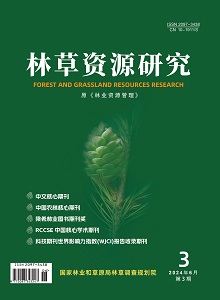Forestland is an essential resource for forestry production.Scientific and reasonable classification of forestland grades can accurately and comprehensively reflect differences in forestland quality,providing a decision-making basis for government macro-control of the forestland market and strengthening forestland management.Taking standard stand volume as an evaluation element of forest potential growth power,we divided forestland quality grades and developed a forest potential productivity evaluation model related to forestland quality grading indicators.We estimated parameters using the LM-UGO method,evaluated model fitting goodness with fitting correlation coefficient,mean square error,sum of squares of residuals,and Chi-square test,and applied forestland quality grading to the forest resources in Wuyishan City and Wuyishan National Park as case studies.The results showed:1) The established forest potential productivity evaluation model had a correlation coefficient of 0.966,a mean square error of 1.726,a sum of squares of residuals of 286.095,and a Chi-square test value of 33.898.The weights of six forestland grading index factors including average annual temperature,average annual rainfall,thickness of humus layer,thickness of soil layer,slope,and slope position were 0.08,0.22,0.27,0.26,0.10,and 0.07 respectively.2) Based on the annual growth amount and average growth rate,the benchmark age for forestland quality grading was determined to be 20 years.3) In Wuyishan City and Wuyishan National Park,the proportions of grades 3 and 4 in forestland quality were relatively large,the proportion of grade 5 was 9.43%,grade 1 was the smallest,and the potential growth level of forestland was at a medium level.The area proportion of each grade was significantly related to altitude(topography),exhibiting a power function or polynomial relationship.Developing a forest potential productivity evaluation model related to forestland quality grading indicators can avoid the subjectivity problem of determining index factor weights by classical decision analysis methods such as the analytic hierarchy process and grey relational analysis method.

